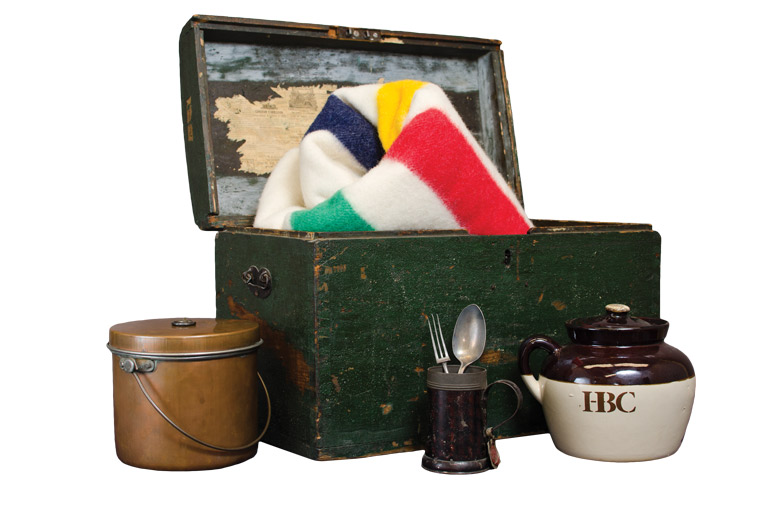Scrimshaw Container

The art of scrimshaw originated with American whalers in the early nineteenth century. Sailors used sharp tools to etch designs into sperm whale teeth, baleen, or ivory from walrus tusks, then they rubbed ink or soot into the grooves to bring their designs to life.
This object, however, has been made from the horn of a land animal, rather than from part of a marine mammal; and, instead of being purely decorative, it was made to serve a function.
The base is made from wood, with the name “M. Mackay” and the location “Fort York” carved into it. York Factory, along the coast of Hudson Bay in what is now northern Manitoba, was often called Fort York, and the designs suggest that the object is from the northern HBC post rather than the historical fortification of 1812 in what is now Toronto.
A search through the Hudson’s Bay Company Archives revealed that a Malcolm Mackay from Inverness, Scotland, joined HBC in 1841 and came to York Factory before moving on to Fort Vancouver the following year.
Did Mackay carve this design, or did he commission it from someone else? What might a container like this have been used for? Unlike many artifacts in the HBC Museum Collection, this one leaves us with more questions than answers.
At Canada’s History, we highlight our nation’s past by telling stories that illuminate the people, places, and events that unite us as Canadians, while understanding that diverse past experiences can shape multiple perceptions of our history.
Canada’s History is a registered charity. Generous contributions from readers like you help us explore and celebrate Canada’s diverse stories and make them accessible to all through our free online content.
Please donate to Canada’s History today. Thank you!
Themes associated with this article
Advertisement
You might also like...

Canada’s History Archive, featuring The Beaver, is now available for your browsing and searching pleasure!









